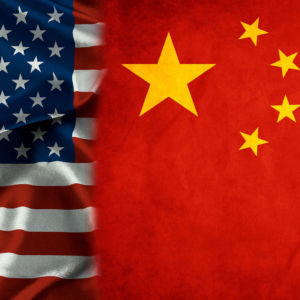President Donald Trump has launched a new attack in his trade war with China, which earned a big thumbs-down from financial markets. Is it possible, though, that his bluster will produce a good long-run deal to offset short-run costs?
Let’s hope so, but it’s unclear whether negotiations between Washington and Beijing will produce a satisfactory result.
That means the president may unilaterally impose a 25 percent tax on $200 billion of Chinese goods, which actually means higher taxes on American consumers, retailers, manufacturers, exporters and farmers. And when China retaliates, there will be even more damage.
Given the risks, we all have a stake in the outcome of these trade negotiations. So here are five things to understand as discussions continue, beginning with a couple of observations about the balance of trade.
—Americans are much richer than their counterparts in China. According to the International Monetary Fund, per-capita economic output in the United States is six times larger than it is in China ($60,000 compared to $10,000). This means Americans can afford to buy a lot more, including more goods and services from around the world. As such, a bilateral trade deficit with China is neither surprising nor worrisome.
—The United States enjoys a far higher level of economic freedom than China. According to the Fraser Institute’s “Economic Freedom of the World,” the United States is ranked No. 6 while China is a lowly No. 107. This helps to explain why Chinese entrepreneurs who earn dollars by selling to American consumers often decide to invest those dollars in the American economy (the United States is the world’s top destination for global investment). This means the trade deficit is matched by a capital surplus.
Those are two reasons trade deficits are a sign of America’s economic strength, which is why Trump is misguided to focus on that statistic.
A trade deficit between the United States and China is almost as meaningless as a trade deficit between Michigan and Arizona.
But this doesn’t mean the president doesn’t have some legitimate complaints, including technology theft. Moreover, he’s also right to target trade barriers.
—China has more protectionist barriers than America. According to the World Trade Organization, average Chinese tariffs are nearly three times higher than America tariffs. And China is also guiltier of using subsidies to help domestic companies. The United States is far from perfect, of course, since we have some of our own trade barriers. The key thing to understand, though, is that people of both nations are the main victims of these bad policies, but it would be good for all of us if those trade barriers were reduced.
This means there’s a potential win-win scenario. China should reform, both to be a better trading partner and to help its own economy by opting for markets rather than government control.
The interesting challenge for Trump and the United States is how to encourage this transformation. Which brings us to our final points.
—Bullying and tit-for-tax retaliation is not an effective strategy. Trump has already imposed trade taxes on a wide range of Chinese exports. Those tariffs hurt China, but they also hurt the United States by raising the price of consumer and intermediate goods. Taxes on Chinese goods also reduce incentives for America companies to become more efficient and better producers. Perhaps most important, there is little reason to think these taxes will have the desired effect of altering Chinese behavior, especially since China’s leaders would never want to appear weak.
—Trump should use the World Trade Organization. The WTO is an underused tool for trade liberalization. It has a dispute resolution process that has been successfully used to cajole and pressure nations into reducing trade barrier. The president has publicly criticized the WTO, but he probably doesn’t realize that the United States wins about nine out of every 10 cases when it challenges other nations’ trade barriers.
The bottom line is that the president’s go-it-alone approach is risky. It could lead to escalating protectionist barriers between the United States and China, and it already is causing plenty of angst among America’s allies. Even if the Chinese back down, the best-case outcome would probably be a set of agreements to buy greater quantities of selected American products.
That’s managed trade, not free trade.
This outcome is particularly frustrating because many other nations would have supported the United States if we had used the WTO as a vehicle to achieve more liberalization.
It’s not too late for the president to select that strategy, of course, but that won’t be likely as long as he mistakenly sees trade as a zero-sum proposition.

